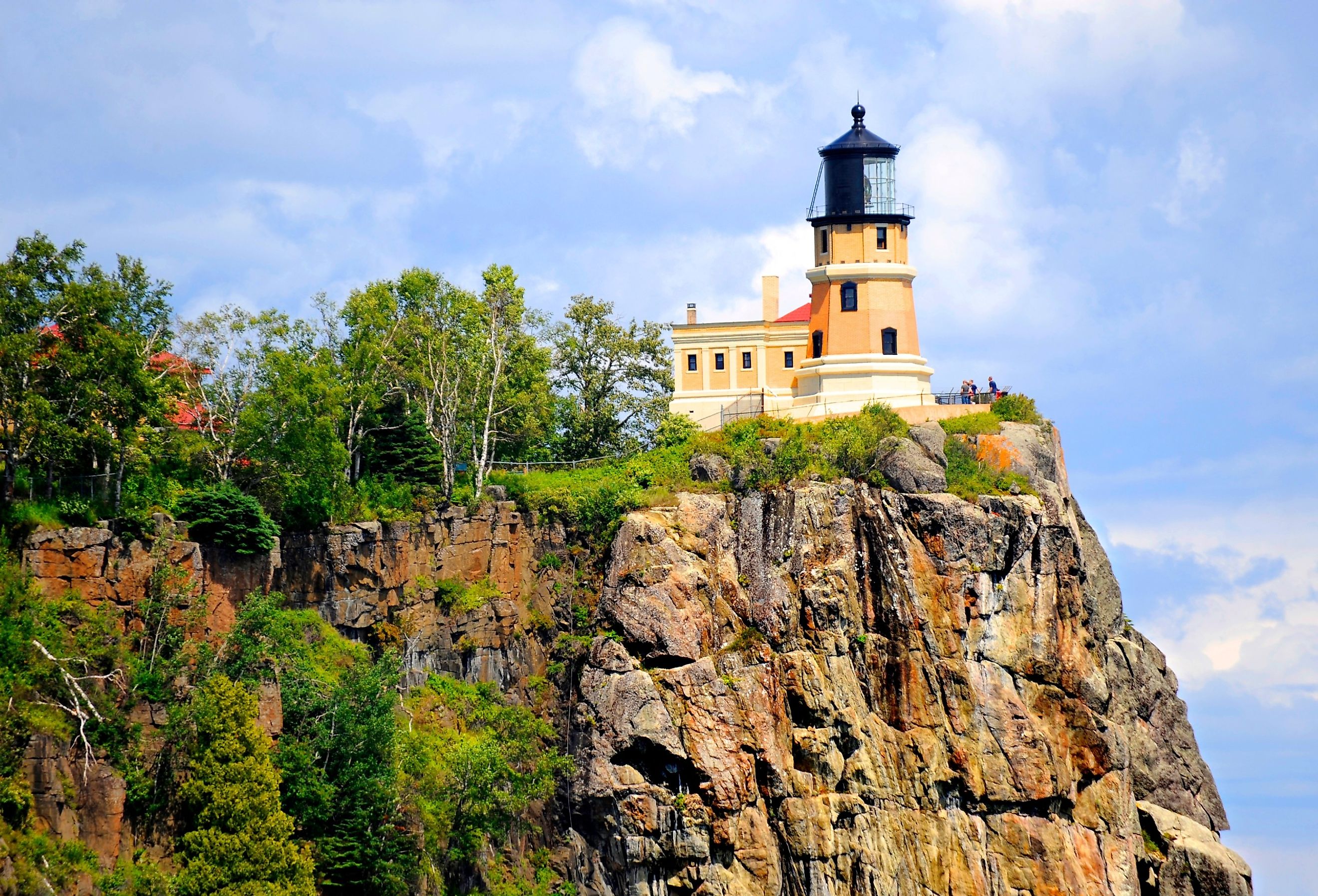
The Best State Parks to Visit in Minnesota
Minnesota is famous for being a state with more than 10,000 lakes as well as charming landscapes such as mountains, rivers, streams, waterfalls, and forests. These landscapes enchant tourists across all seasons and make the state ever-inviting. Some of the best landscapes are inside state parks for adequate preservation and to promote their touristy allure. While the state is home to over 50 parks, some are just more enticing than others. From Split Rock Lighthouse to Grand Portage, uncover the nine best state parks in Minnesota you have to visit soon.
Zippel Bay State Park
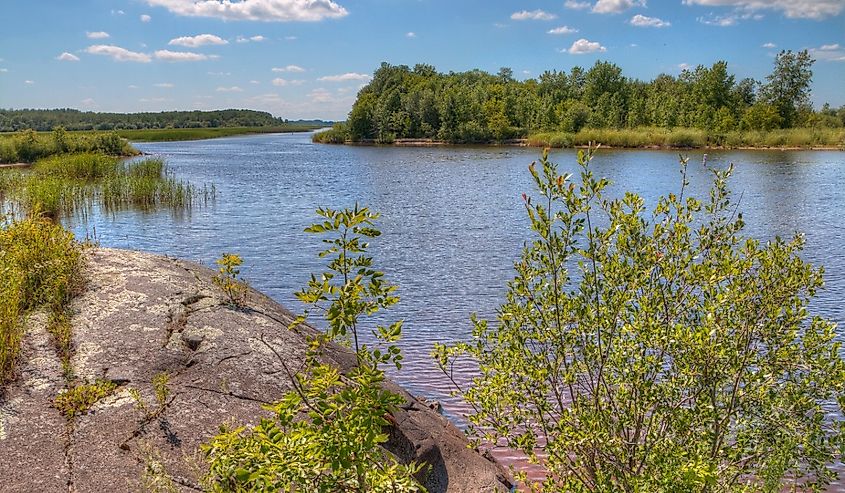
Zippel Bay State Park is a laid-back preserve situated on the sugar-white sand beach of Lake of the Woods, one of the country’s largest lakes. The park has a boat ramp for boating, a swimming area on the beach, picnic facilities, a pavilion, and a fishing pier where you can fish for walleyes, saugers, and other species. Hikers can even explore the park’s six miles of hiking trails, while 11 miles of cross-country skiing trails and three miles of snowmobile trails set the stage for winter adventures.
While roaming the park, enjoy its array of aspen, birch, and pine trees and keep an eye out for wildlife such as coyotes, Dakota white-tailed deer, and Western moose. The park also has two campgrounds, with 57 campsites for campers and retreat seekers.
Jay Cooke State Park
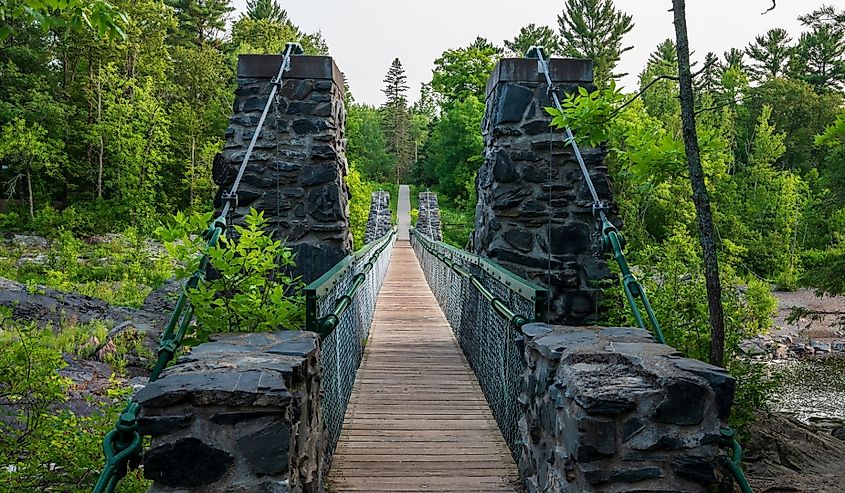
Just 15 miles south of Duluth, Jay Cooke State Park charms every outdoor buff while preserving the lower reaches of the Saint Louis River. Typical activities within the park include kayaking, canoeing, boating, and fishing on the Saint Louis River alongside the two dams near it—Thompson and Fond du Lac dams. Additionally, the park has over 50 miles of hiking trails, with some offering lovely views of the river and the swinging bridge over it.
On the trails, hikers and bikers will also be entertained by wildlife sightings such as white-tailed deer, black bears, wolves, and great blue herons. Additionally, the park hosts campsites and historic structures like the River Inn (constructed between 1939 and 1942) and the Bathroom Building (built in 1936).
Banning State Park
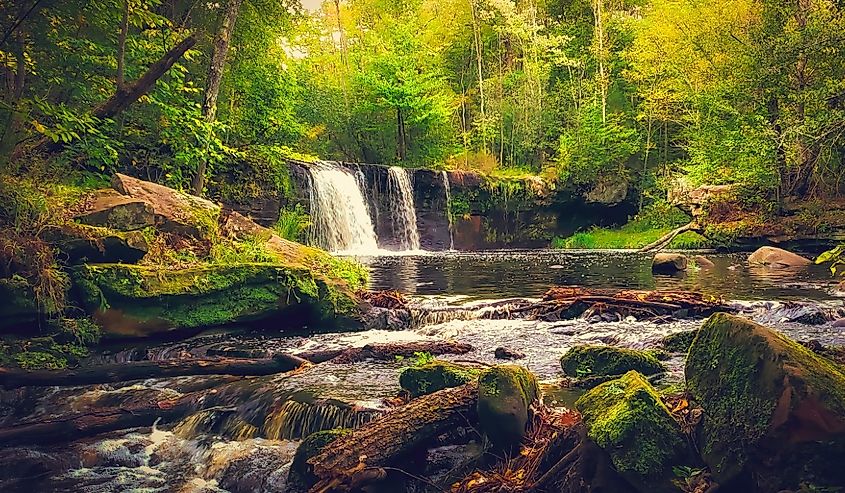
Banning State Park is a haven for water sports enthusiasts as it is located on the Kettle River, not far from Sandstone Town. The river is a state-designated wild and scenic water body, featuring about 1.5 miles of treacherous Class III to V rapids for kayaking and canoeing. For those who prefer hikes, explore the river’s bank and admire various sandstone formations and natural potholes.
In addition, the park has 17 miles of hiking trails, and while exploring them, hikers can watch out for wildlife such as black bears, foxes, coyotes, snowshoe hares, and several species of birds. The park is also home to the beautiful Wolf Creek Falls and remnants of historic buildings dating to the 1800s. For campers, there are 33 sites within the park for longer experiences.
Grand Portage State Park
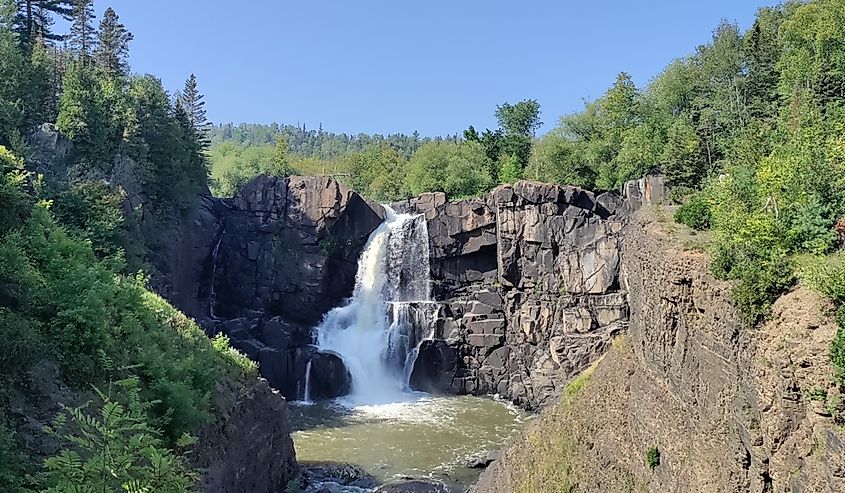
Grand Portage State Park is situated close to the Canadian border and is home to High Falls, the tallest waterfall in the state at 120 feet. The park is also along the Pigeon River, which creates the fall alongside a mixed hardwood forest for exploring. A scenic boardwalk leads to the fall, while various wooden decks offer panoramic views of the thundering beauty. Another 4.5-mile round-trip trail leads to Middle Falls, where one can savor dazzling natural scenery, including distant views of Lake Superior.
While exploring the park, watch out for its endemic wildlife, which includes white-tailed deer, black bear, Canadian lynx, porcupine, and moose. On the Pigeon River, waterfowl and ospreys can also be seen hunting walleyes and other fish species. After exploring the park, recline at its picnic shelters or stroll to the US-Canadian border for sightseeing.
Tettegouche State Park
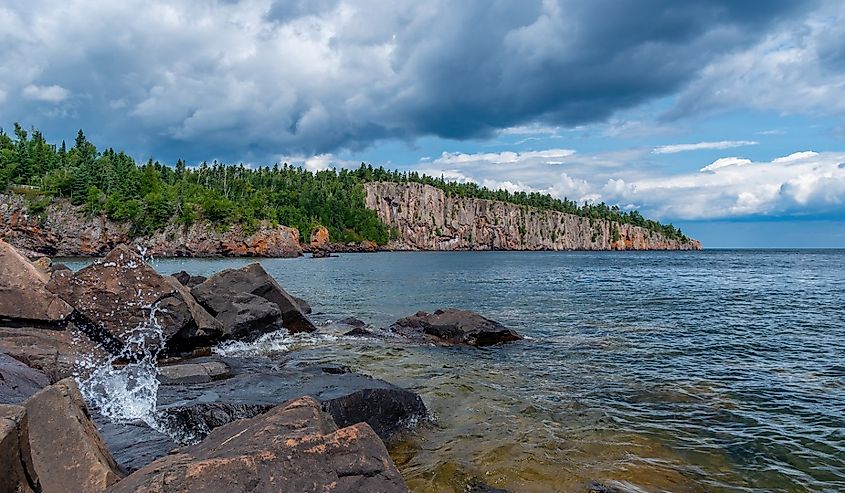
This state park along the north shore of Lake Superior is one of the most beautiful and largest in the state at 9,346 acres. Within the park are six inland lakes for fishing, four waterfalls, including the 70-foot-tall baptism river falls, and a beach on Lake Superior to enjoy water sports or sunbathe. Additionally, there are 22 miles of hiking trails to explore, and rock climbing is available at Palisade Head Cliffs and Shovel Point, overlooking the world's largest freshwater lake by area.
Wildlife, such as white-tailed deer, coyote, hawk, red fox, black bear, and peregrine falcons on Lake Superior, further make the park an exciting outdoor destination. Meanwhile, campgrounds and five picnic sites are available for cooling off after exploring.
Great River Bluff State Park
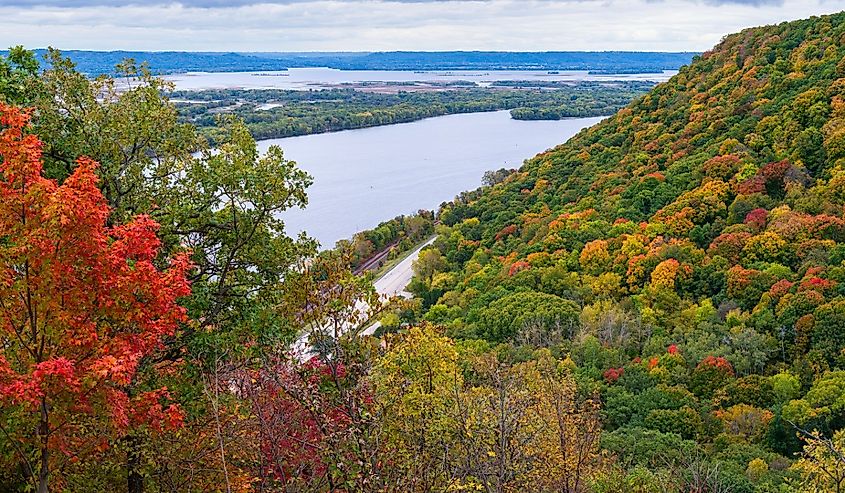
The 3,067-acre Great River Bluff State Park by the Mississippi River is one of the best places to savor panoramic views of America’s second-longest water body. Tourists can hike the over six miles of trails around the park to the preserved scenic bluffs to capture these enchanting river views. In autumn, a kaleidoscope of colors carpet the bluffs, making them more picturesque, while the goat prairies are stunning in summer. Campgrounds and picnic stands are also within the camp for extended stays and relaxing experiences after hiking. Meanwhile, red-tailed hawks and other bird species make hiking through this park all the more memorable.
Split Rock Lighthouse State Park
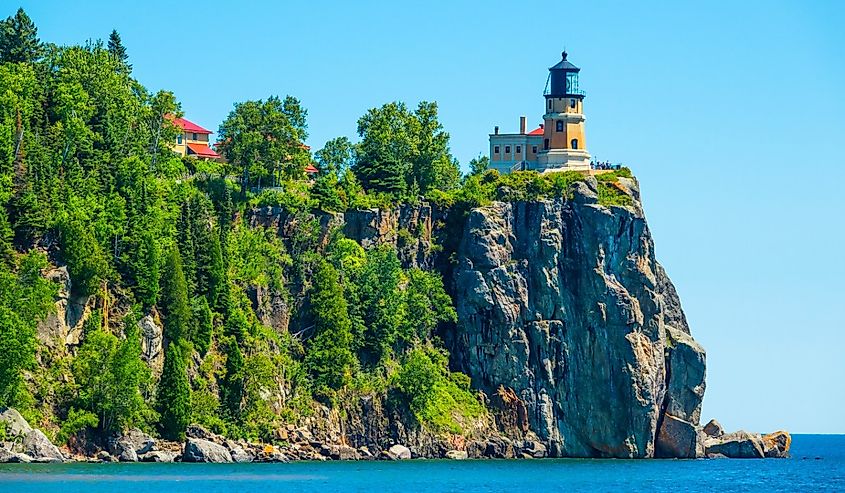
Split Rock Lighthouse State Park is another magnificent park situated on the north banks of Lake Superior. However, the park revolves around the Split Rock Lighthouse, one of the most photographed lighthouses in the state. The park occupies 4 miles of Lake Superior’s shoreline, while views of the lake from the lighthouse are scenic. Away from the lighthouse, the east and west branches of Split Rock River meet in the park. Hence, prime activities here include sea kayaking, boating, fishing for lake trout and salmon, and canoeing, including scuba diving to Madeira Wreck.
Hiking is also a highlight activity in the park, with 14.5 miles of trails, including a paved segment of Gitchi-Gami State Trail and Superior Hiking Trail. Some trails lead to overlooks for enchanting views of Lake Superior and the lighthouse. There are also campsites in the park and a lakeshore picnic area where you can relax and snack while enjoying the views.
Gooseberry Falls State Park
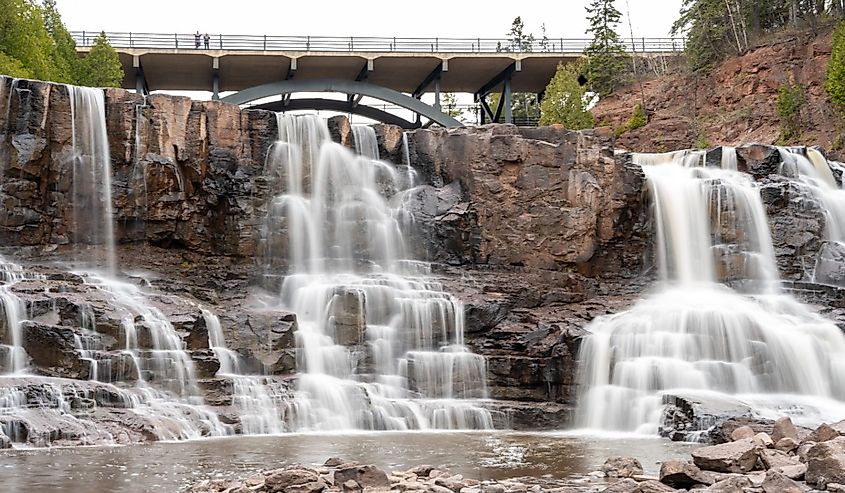
Gooseberry Falls State Park is situated by the north banks of Lake Superior in Silver Creek township and occupies more than 1,600 acres of land. This stunning park encompasses the mouth of the Gooseberry River and three falls—upper, lower, and middle Gooseberry Falls. The waterfalls are close to the highway, making them easier to access without long or strenuous hikes. However, those who want to explore the scenery while hopping falls can do so at the Falls View Loop or Waterfalls Walk.
If these walks are not enough, the park connects to the majestic Lake Superior Hiking Trail, one of the best in the state, for enchanting lake views. In addition, the park also offers access to the 2.5-mile section of the Gitchi-Gami State Trail that runs through it and leads to the rest of the larger trail on Highway 61.
Itasca State Park

Itasca State Park is one of the largest, most visited, and oldest state parks in Minnesota, created in 1891. Covering an area of more than 32,000 acres, the park is remarkable for housing the headwaters of the Mississippi River at Lake Itasca, and this headwaters is one of the most visited spots in the park where opportunities for fishing, kayaking, canoeing, and boating are endless. Away from water sports, Heartland Trail is in the park for bikers and hikers, while a segment of the North Country National Scenic Trail cuts through the park for more hikes.
In addition, the park has historic and rustic structures for history buffs to admire. These include Douglas House, the Clubhouse overlooking Lake Itasca, Forest Inn, and Old Timers Cabin. Visitors can also climb a 100-foot fire tower, learn about the headwaters of the Mississippi River at the Mary Gibbs Center, and camp on its many campsites.
Explore the land of 10,000 lakes across its state parks, where the flavor of the outdoors comes alive. Embark on various activities such as hiking, boating, kayaking, canoeing, fishing, paddling, mountain climbing, chasing waterfalls, and basking on beaches. Otherwise, recline on a tub for gentle floats, enjoy picnics by the banks of freshwater lakes, and camp for more unique experiences. Whatever suits the fancy of any visitor, these parks are just slices of paradise, offering an escape from the norms and bustle of city life in Minnesota.











